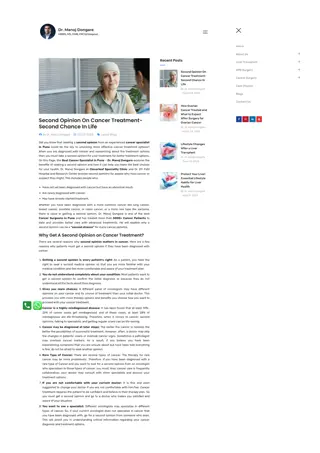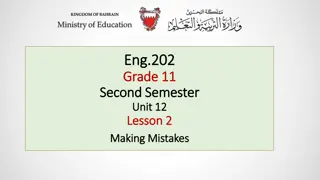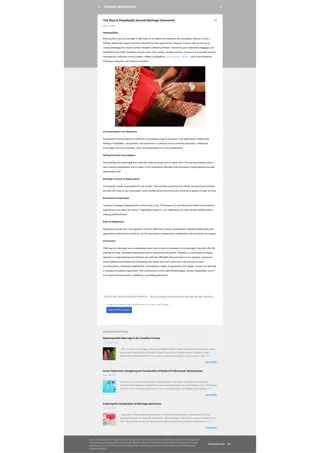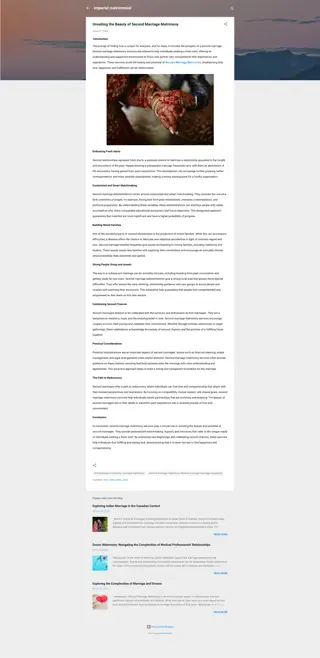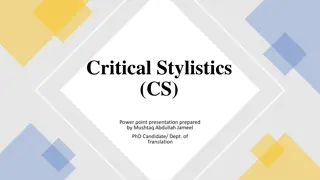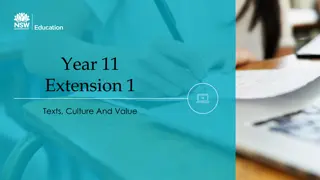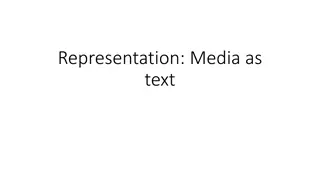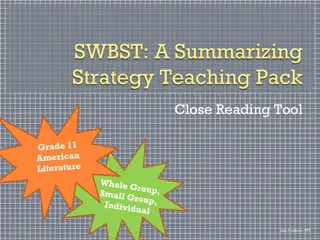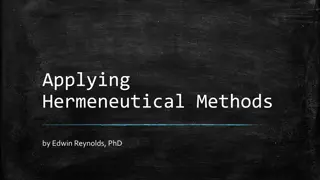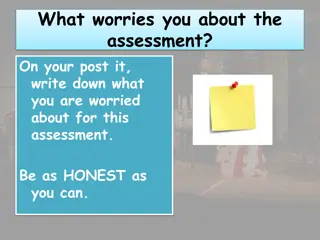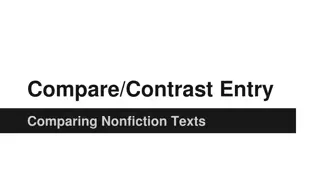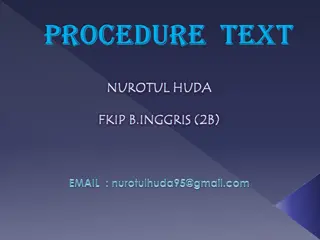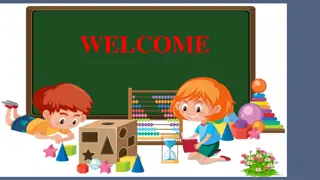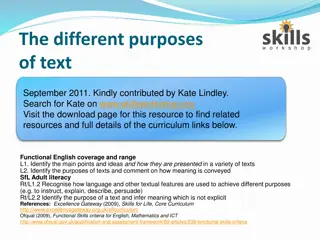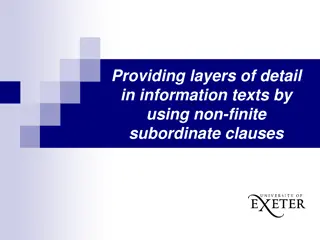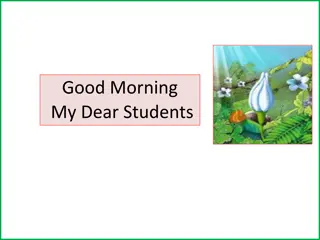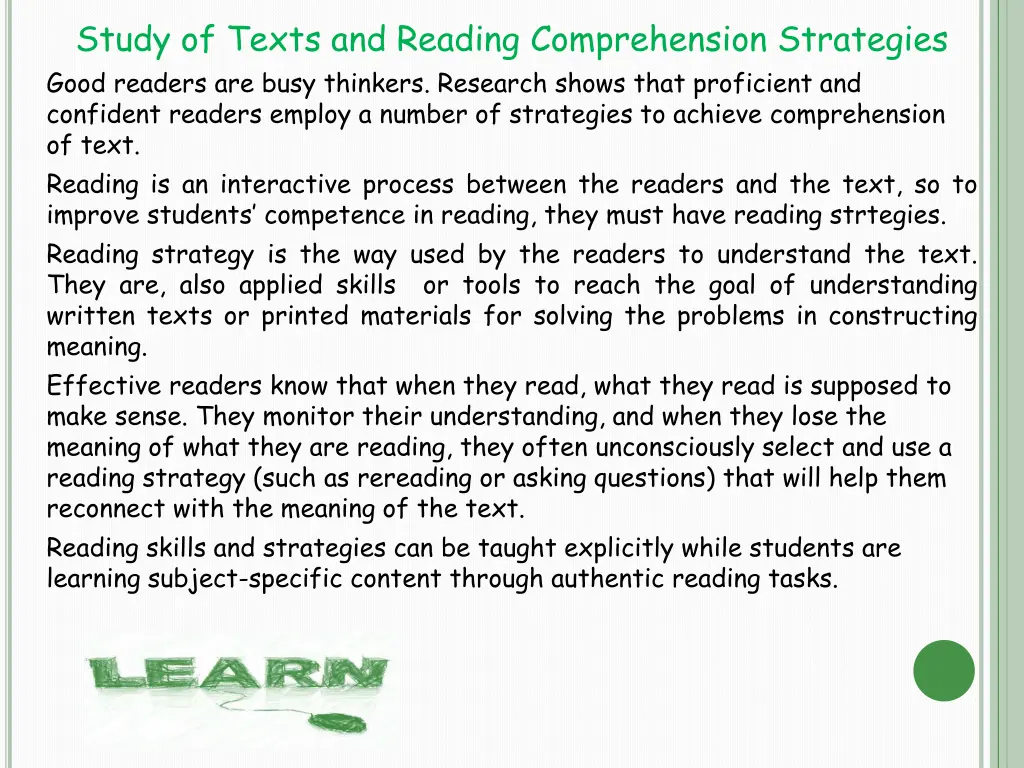
Reading Comprehension Strategies and Techniques for Effective Learning
Understand the importance of reading strategies in improving comprehension skills. Learn about pre-reading, during-reading, and after-reading techniques to enhance understanding, connect prior knowledge, set reading purposes, and more. Discover how activating prior knowledge and previewing texts play a crucial role in successful reading outcomes.
Download Presentation

Please find below an Image/Link to download the presentation.
The content on the website is provided AS IS for your information and personal use only. It may not be sold, licensed, or shared on other websites without obtaining consent from the author. If you encounter any issues during the download, it is possible that the publisher has removed the file from their server.
You are allowed to download the files provided on this website for personal or commercial use, subject to the condition that they are used lawfully. All files are the property of their respective owners.
The content on the website is provided AS IS for your information and personal use only. It may not be sold, licensed, or shared on other websites without obtaining consent from the author.
E N D
Presentation Transcript
Study of Texts and Reading Comprehension Strategies Good readers are busy thinkers. Research shows that proficient and confident readers employ a number of strategies to achieve comprehension of text. Reading is an interactive process between the readers and the text, so to improve students competence in reading, they must have reading strtegies. Reading strategy is the way used by the readers to understand the text. They are, also applied skills or tools to reach the goal of understanding written texts or printed materials for solving the problems in constructing meaning. Effective readers know that when they read, what they read is supposed to make sense. They monitor their understanding, and when they lose the meaning of what they are reading, they often unconsciously select and use a reading strategy (such as rereading or asking questions) that will help them reconnect with the meaning of the text. Reading skills and strategies can be taught explicitly while students are learning subject-specific content through authentic reading tasks.
Classification of Reading Strategies CONSTRUCT MEANING PRE-READING STRATEGIES ORGANIZE DURING-READING STRATEGIES STORE AFTER-READING STRATEGIES
Reading Strategies are classified as: before, during, and after reading. Before reading, they: use prior knowledge to think about the topic. make predictions about the probable meaning of the text. preview the text by skimming and scanning to get a sense of the overall meaning. During reading, they: monitor understanding by questioning, thinking about, and reflecting on the ideas and information in the text. After reading, they: reflect upon the ideas and information in the text. relate what they have read to their own experiences and knowledge. clarify their understanding of the text. extend their understanding in critical and creative ways.
A/ Before Reading 1- Preview the Text In previewing, readers browse the text and use its appearance to help them know what the text is about. They skim titles, glossary, beginning of each paragraph, closing of paragraphs, as well as comprehension questions. Previewing enables readers to form an idea about the characteristics of the text, including topic, organization, and difficulty levels. 2- Activate Prior Knowledge Activating prior knowledge is a way of getting students warmed up and ready to read. Activate Prior Knowledge considers what learners already know about the subject and connect it to other knowledge they possess. By making connections, the learners can connect the ideas in the text to their own experiences. Reading becomes meaningful when the reader connects the ideas in the text to their experiences and beliefs, and the things happening in the outer world.
3- Set a Purpose for Reading Setting purposes for reading means giving learners a reason to read a particular text. Approaching a book with a purpose in mind gives the reader something to focus on and keeps attention on the text. Whether it is to learn, to be entertained, to explore a new interest, to find instructions for something, or to support an idea, students must have a reason for reading and must understand why they are reading a given passage. 4- Predict Predicting is a way of engaging and actively thinking about a text. If readers anticipate what is going to happen, they can more easily read to confirm or contradict their predictions. Predicting what will happen in a text or a book takes place both before and during reading. By looking at the cover, the pictures, the table of contents, and the description on the back, learners predict what the text will be about or what they will learn. As they start to read, they make predictions about what a character will do, what will happen next.
B/ During Reading 1-Decoding Text Decoding is being able to figure out the words and sentences of a text. It is looking at the word and knowing what it is by applying rules of phonics, by recognizing parts of the word, and by thinking about what would make sense in the sentence. 2-Visualizing Another strategy that the good readers employ when comprehending a text is visualization (Adler, 2001). Visualization requires the reader to construct an image of what is read. This image is stored in the Reading Panel, 2000). Teachers can motivate students to visualize settings, characters, and actions in a story and ask them to make drawings or write about the image that come to their minds after visualizing the text. Visualizing is forming a picture in student s mind while s/he reads. The words come to life inside his/her head. Strong readers form clear visual images.
3- Asking Questions Readers can use the questioning before, during, and after reading. The questioning process requires readers to ask questions of themselves to construct meaning, enhance understanding, find answers, solve problems, find information, and discover new information (Harvey &Goudvis, 2000). In this strategy, the students return to the text throughout the reading process to find the answers to the questions asked by the teacher before, during and after the reading. By this strategy, students practice to distinguish between questions that are factual prior knowledge. By using the student generated questioning strategy; text segments are integrated and thereby improve reading comprehension (NRP, 2000). The questioning can focus on Who, What, Where, When, Why and How enquiries.
3- Monitoring Comprehension (Clarifying) Monitoring comprehension encourages pupils to monitor their own comprehension as they encounter barriers to comprehension (especially with vocabulary). Teachers model with pupils how to figure out a difficult word (re-read, look for parts of the word they know, read on and look for context clues, read the whole sentence, etc) and call on peers to share their own ideas. They can also model dictionary, map-reading, encyclopedia and IT skills. .
C/ After Reading 1- Summarizing The process of summarization requires the reader to determine what is important when reading and to condense the information in the readers own words (Adler, 2001). During the summarizing process, the students will be able to distinguish the main ideas from the supporting ideas. Distinguishing the related knowledge from the unrelated ones is another point in the summarizing process which will help the students capacity to improve text comprehension. 2- Reflecting Good readers know what they read. They internalize and think about it. They relate what they ve read to their own lives and look for how those ideas and messages, in the text, can influence their everyday life (decisions, relationships, actions).

